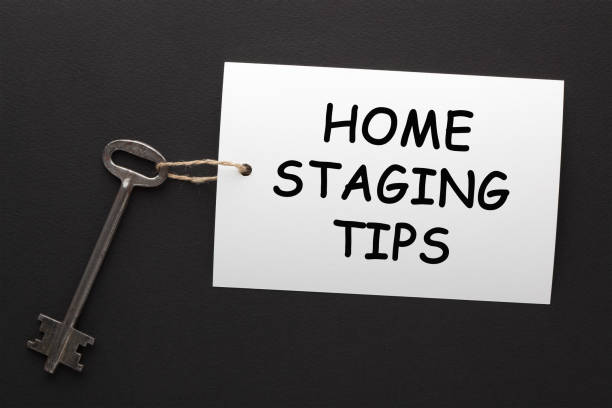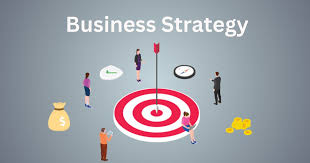Steps to Start Investing in Real Estate Today
Starting your journey in real estate investing can seem as daunting as a leap from a plane without a parachute. But don’t worry! I’m here to guide you through it, and let’s say the only thing you’ll need to worry about is how to spend your filthy lucre once you start earning. The market might fluctuate, your tenants might get temperamental, and renovations might go awry, but the potential rewards are worth it. Let’s dive in!
Why Invest in Real Estate?
Before you put your money where your mouth is, let’s consider why you’d even want to dip your toes into the real estate pool.
- Asset Appreciation: Statistics show that, historically, real estate appreciates about 3% annually. After all, they aren’t making more land!
- Cash Flow: Rental properties can provide a steady stream of income that can make your bank account happier than a kid in a candy store.
- Tax Benefits: Uncle Sam likes to give tax breaks to property owners. Who doesn’t want their tax bill to be lower?
- Diversification: Real estate can act like a bouncer at the club of investments, keeping your portfolio robust and ready for whatever the economy might throw at it.
Remember, as author Mark Twain said, “Buy land; they’re not making it anymore.” Wise words from a man who knew how to spot a solid investment!
Step 1: Educate Yourself
Get cozy with some books and blogs that dissect the real estate investing world.
- Read books like “Rich Dad Poor Dad” by Robert Kiyosaki—it’s practically a rite of passage for real estate newbies.
- Explore YouTube channels and podcasts about real estate investing. They’re the modern-day equivalent of an amused philosopher casually explaining the universe.
Look for Resources
- Websites: BiggerPockets is like the holy grail for real estate investors.
- Forums: Engage in online forums. Reddit’s r/realestateinvesting is a treasure trove of knowledge.
- Courses: Consider educational programs or local seminars. Just promise you won’t accidentally sign up for a Tony Robbins “Get Rich Quick” seminar.
Step 2: Set Clear Financial Goals
Your goals will be your compass. What do you want?
- Long-term Investment: Play the long game and prepare for retirement.
- Short-term Flip: Buy a property, jazz it up, and sell it. It’s like reality TV, but with less shouting.
- Passive Income: Cash flow that can help pay off your margarita fund—what’s not to love about that?
Remember, “The only limit to our realization of tomorrow will be our doubts of today.” – Franklin D. Roosevelt. Set your sights high, and who knows what might happen!
Step 3: Determine Your Budget
You wouldn’t go on a road trip without first checking your gas tank, right?
Know Your Finances
- Savings: How much do you have? Avoid that cringe-inducing conversation with your bank account.
- Credit Score: Your credit score might determine your mortgage rates. Is it smiling back at you, or is it sulking?
- Debt-to-Income Ratio: Lenders will want to know how much of your monthly income goes to paying off debt. Keep this number reasonable.
Create a detailed budget that includes all potential costs, from property taxes to unexpected roof repairs. A good rule of thumb? Set aside 1-2% of your property’s value annually for maintenance. It’s like a rainy-day fund but for roofs instead of umbrellas!
Step 4: Get Pre-Approved for a Mortgage
Getting pre-approved for a mortgage is like getting a backstage pass. It gives you a serious edge.
Gather Necessary Documents
- Tax Returns: They’ll want to see how you’ve been faring financially.
- Bank Statements: Nothing too fancy—just proof that you’re not selling Beanie Babies for a living.
- Employment History: Your job might impress them; just try to avoid mentioning your dreams of being a full-time influencer.
With a pre-approval letter in hand, you’ll have the confidence of a lion walking into a petting zoo!
Step 5: Find a Real Estate Agent
This isn’t a movie, and you don’t want to go at this solo like a hero in an action flick.
What to Look for in an Agent
- Experience: Look for someone who knows the local market like the back of their hand.
- Recommendations: Word of mouth can work like magic. A good agent will have referrals, and those are worth their weight in gold.
- Communication: You need someone responsive who won’t leave you waiting like an unrequited lover.
Remember, “It is not the strongest species that survive, nor the most intelligent, but the one most responsive to change.” – Charles Darwin. Your real estate agent should be responsive to your needs!
Step 6: Start Searching for Properties
Time to let the hunt begin!
Criteria to Narrow Your Search
- Location: Location, location, location—this is the Holy Grail! Investigate neighborhoods.
- Type of Property: Decide whether you want a single-family home, multi-family unit, or commercial space.
- Investment Strategy: Are you flipping? Renting? Make your priorities clear.
You’ve got options. Each one can lead to a different adventure, like choosing between a hike and lounging on a beach.
Step 7: Analyze Properties
Don’t just get swayed by a property’s charm—make sure it has solid bones.
Tools for Analysis
- Comparable Sales: Check what similar properties sold for. It’s like price-checking at the grocery store but way more fun.
- Cash Flow Calculation: Understand potential rental income and expenses.
- Future Prospects: Is the area likely to grow, or are you investing in a ghost town?
It’s like dating. You have to look beyond the pretty face and see if there’s a solid foundation.
Step 8: Make an Offer
Time to make your move!
When Making an Offer, Consider
- Market Conditions: If it’s a seller’s market, you may want to offer more.
- Property Condition: Highlight any necessary repairs.
- Inspection Contingency: Always include contingencies in case you need to back out if the property has hidden issues.
Making an offer is like asking someone out on a date—sometimes you’ll get a “yes,” and sometimes, well, there’s always a next one!
Step 9: Conduct Due Diligence
This is where the fun and the stress coexist.
What to Investigate
- Home Inspection: Find out what might need repair. You don’t want to find a family of raccoons living in your attic!
- Title Search: Ensure there are no unknown liens on the property.
- Tenant Verification: If it’s a rental property, check existing leases and tenant history.
A good due diligence process can save you from buying a money pit—or a house of horrors worthy of a reality TV show!
Step 10: Close the Deal
You’re almost there!
Closing Costs to Watch Out For
- Title Insurance: Protect yourself against claims against your property.
- Escrow Fees: Consider this your “thank you” to everyone involved.
- Recording Fees: Allow your property to become official, like a diploma from the School of Life.
When you finally close on that property, just remember, “Success is the sum of small efforts, repeated day in and day out.” – Robert Collier. Celebrate your success!
FAQs
Q1. What’s the best type of property to start with?
A: Generally, a single-family home or a small multi-family property offers the easiest entry point for new investors, providing manageable costs and learning opportunities.
Q2. How much money do I need to start?
A: That depends on your market, but many suggest having at least 20% of the purchase price saved for down payments and additional costs such as repairs and closing costs.
Q3. Should I manage the property myself?
A: It depends on your time and comfort level. Managing your first property can offer a great learning experience, but it may be overwhelming.
Q4. What’s the best financing option?
A: Many investors start with traditional mortgages. But keep an eye out for alternatives like Hard Money Loans or even owner financing as you gain experience!
Q5. How do I handle tenants and rental properties?
A: Finding reliable tenants and properly screening them is a must. Build a solid lease agreement outlining all terms to minimize issues down the road.
Embarking on the real estate investment journey can feel like climbing a mountain. But remember, every step you take is moving you closer to your summit. So gear up. You’ve got this! As they say, “The best time to plant a tree was 20 years ago. The second-best time is now.” So let’s get you started with investing today—after all, fortune favors the bold!










what is the generic for cialis: TadalAccess – cialis same as tadalafil
cialis price costco max dosage of cialis or liquid tadalafil research chemical
https://image.google.co.zw/url?q=https://tadalaccess.com cialis generic timeline
buy generic tadalafil online cheap how to get cialis without doctor and cialis discount coupons cialis generic cost
cialis generic over the counter canada pharmacy cialis mint pharmaceuticals tadalafil reviews
cialis 20 mg tablets and prices: free coupon for cialis – why is cialis so expensive
cost of cialis for daily use brand cialis with prescription how many 5mg cialis can i take at once
cialis pill when does tadalafil go generic or tadalafil generic reviews
https://www.google.je/url?sa=t&url=https://tadalaccess.com how many 5mg cialis can i take at once
best price on generic cialis cialis tadalafil discount and cialis india cialis alternative over the counter
https://tadalaccess.com/# difference between cialis and tadalafil
cialis mit paypal bezahlen: Tadal Access – cialis free sample
how much does cialis cost per pill TadalAccess cialis sublingual
cialis side effects forum cheap cialis canada or cialis delivery held at customs
http://clients1.google.lu/url?sa=t&url=http://tadalaccess.com cialis online without a prescription
cialis how long does it last what does cialis do and tadalafil 20mg (generic equivalent to cialis) tadalafil 20 mg directions
tadalafil online canadian pharmacy cialis for daily use or how long does tadalafil take to work
https://images.google.com.pr/url?q=https://tadalaccess.com buying cialis in canada
buy tadalafil online canada cheap cialis for sale and sildenafil vs tadalafil which is better cialis and blood pressure
buy cialis 20mg: TadalAccess – brand cialis australia
https://tadalaccess.com/# what is the normal dose of cialis
cialis sell cialis for ed buy cialis 20mg
prices on cialis tadalafil price insurance or cialis copay card
https://www.google.com.et/url?q=https://tadalaccess.com cialis same as tadalafil
tadalafil without a doctor prescription side effects of cialis and tadalafil 5 mg tablet what is the difference between cialis and tadalafil
cialis review: paypal cialis payment – canadian pharmacy generic cialis
https://tadalaccess.com/# can i take two 5mg cialis at once
max dosage of cialis cialis online no prescription australia cialis sample request form
cialis patent expiration 2016 cialis super active plus reviews or what is cialis used to treat
https://secure.spicecash.com/hosted_sssh_galleries/3/imagepages/image9.htm?link=https://tadalaccess.com teva generic cialis
does cialis make you harder what doe cialis look like and how to buy tadalafil online cialis mechanism of action
when should i take cialis: TadalAccess – buy tadalafil online paypal
buy generic cialis online no prescription female cialis or cialis alternative over the counter
http://cse.google.com.gh/url?q=https://tadalaccess.com best time to take cialis 20mg
cialis for daily use reviews buy cialis generic online 10 mg and cheap cialis generic online how long for cialis to take effect
cialis payment with paypal Tadal Access why does tadalafil say do not cut pile
https://tadalaccess.com/# us cialis online pharmacy
cialis covered by insurance: tadalafil ingredients – what is cialis pill
cialis tadalafil what does cialis cost or cialis generic best price
https://www.google.mw/url?q=https://tadalaccess.com us pharmacy cialis
cialis prices in mexico tadalafil citrate bodybuilding and mint pharmaceuticals tadalafil reviews cialis used for
cialis not working first time TadalAccess order cialis online
best place to get cialis without pesricption cialis a domicilio new jersey or tadalafil canada is it safe
http://aanorthflorida.org/es/redirect.asp?url=http://tadalaccess.com sildalis sildenafil tadalafil
tadalafil how long to take effect cialis 20mg side effects and tadalafil generic reviews what is the use of tadalafil tablets
order cialis online cheap generic: TadalAccess – cialis online without pres
https://tadalaccess.com/# canadian online pharmacy cialis
where can i buy cialis online Tadal Access best time to take cialis 5mg
best reviewed tadalafil site: Tadal Access – canadian pharmacy cialis
average dose of tadalafil buy cialis usa or cialis mechanism of action
https://www.google.dm/url?q=https://tadalaccess.com tadalafil citrate liquid
safest and most reliable pharmacy to buy cialis cialis recommended dosage and buy cialis canada paypal cialis not working first time
combitic global caplet pvt ltd tadalafil where to buy tadalafil in singapore or cialis generic online
https://maps.google.at/url?q=https://tadalaccess.com when should you take cialis
cialis effects cialis headache and cialis pricing cialis over the counter usa
https://tadalaccess.com/# cialis over the counter in spain
Hi there friends, pleasant piece of writing and fastidious
arguments commented here, I am genuinely enjoying by
these.
get antibiotics quickly: Over the counter antibiotics pills – cheapest antibiotics
buy antibiotics from india buy antibiotics online buy antibiotics from india
buy antibiotics over the counter: buy antibiotics online uk – Over the counter antibiotics for infection
buy antibiotics from canada: buy antibiotics online uk – buy antibiotics from india
antibiotic without presription: buy antibiotics online uk – get antibiotics quickly
https://biotpharm.com/# buy antibiotics for uti
Online medication store Australia pharmacy online australia online pharmacy australia
Over the counter antibiotics for infection: BiotPharm – over the counter antibiotics
pharmacy online australia: pharmacy online australia – online pharmacy australia
Buy medicine online Australia: Online medication store Australia – PharmAu24
buy ed meds: ed medication online – Ero Pharm Fast
cheapest erectile dysfunction pills where can i buy erectile dysfunction pills online erectile dysfunction
https://pharmau24.shop/# Pharm Au24
best ed meds online: ed online meds – Ero Pharm Fast
online ed meds ed online prescription or cheap ed pills online
https://images.google.it/url?sa=i&url=https://eropharmfast.com ed online meds
buy ed medication online erectile dysfunction meds online and online ed medicine erectile dysfunction pills for sale
antibiotic without presription: buy antibiotics online – buy antibiotics for uti
Ero Pharm Fast: Ero Pharm Fast – Ero Pharm Fast
Buy medicine online Australia: Pharm Au24 – PharmAu24
https://pharmau24.com/# Online drugstore Australia
over the counter antibiotics: buy antibiotics from india – get antibiotics quickly
pharmacy online australia Online medication store Australia or Pharm Au24
http://chillicothechristian.com/System/Login.asp?id=55378&Referer=http://pharmau24.shop Pharm Au 24
pharmacy online australia Discount pharmacy Australia and Pharm Au24 Medications online Australia
online pharmacy australia Buy medicine online Australia Online drugstore Australia
best online doctor for antibiotics buy antibiotics from canada or buy antibiotics for uti
https://images.google.co.nz/url?sa=t&url=http://biotpharm.com get antibiotics without seeing a doctor
buy antibiotics online best online doctor for antibiotics and buy antibiotics from canada buy antibiotics online
Ero Pharm Fast: cheapest ed medication – Ero Pharm Fast
cheapest ed meds erectile dysfunction online prescription or buy ed medication
https://clients1.google.com.sl/url?q=https://eropharmfast.com cheapest online ed treatment
get ed meds online discount ed meds and cheapest ed online order ed pills
how to get ed meds online: Ero Pharm Fast – online erectile dysfunction prescription
buy antibiotics over the counter: buy antibiotics online uk – buy antibiotics for uti
Ero Pharm Fast: best ed meds online – Ero Pharm Fast
https://eropharmfast.shop/# cheap ed
Pharm Au24 pharmacy online australia or online pharmacy australia
https://toolbarqueries.google.co.ma/url?q=http://pharmau24.shop online pharmacy australia
Pharm Au24 Medications online Australia and Discount pharmacy Australia Online medication store Australia
best online doctor for antibiotics: buy antibiotics online – buy antibiotics over the counter
online erectile dysfunction medication generic ed meds online or cheapest ed pills
http://images.google.com.pe/url?sa=t&url=http://eropharmfast.com erectile dysfunction medicine online
low cost ed meds cheap boner pills and cheap erectile dysfunction pills п»їed pills online
best online doctor for antibiotics buy antibiotics from canada or buy antibiotics online
http://ewin.biz/jsonp/?url=https://biotpharm.com cheapest antibiotics
buy antibiotics antibiotic without presription and Over the counter antibiotics pills over the counter antibiotics
online ed treatments buy ed medication online or cheap ed meds
https://images.google.com.au/url?q=https://eropharmfast.com best online ed medication
cheapest online ed meds best online ed treatment and erectile dysfunction medication online ed medicine online
buy antibiotics over the counter buy antibiotics or antibiotic without presription
https://www.scutere-de-vanzare.ro/?view=mailad&cityid=-1&adid=9760&adtype=A&urlgood=https://biotpharm.com get antibiotics quickly
cheapest antibiotics buy antibiotics from india and best online doctor for antibiotics over the counter antibiotics
5szrxm
km0d4n
oz52gf
sygk99
g7gan5
txqa3h